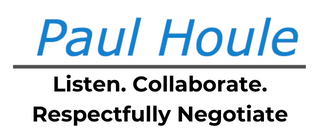When you have a colleague who always plays "more cowbell".
Perhaps you are familiar with the famous Will Farrell and Christopher Walken skit from Saturday Night Live where Farrell plays the cowbell along with the “band” Blue Oyster Cult. In case you‘re not, you have to see it. Just Google - "more cowbell".
In this skit, he dominates the recording session by playing his cowbell louder than any of the other instruments (encouraged by the producer). As he does this, he annoys his band mates more and more with each take. Finally things come to a head and tempers flare, but in the end the band members resolve their differences. Farrell is allowed to continue his very over-the-top cowbell playing only because the producer wants – “more cowbell!”
This is a very funny skit, but what about in the real world? What happens when you have someone at work who is, shall we say, “insensitive” to the point of annoyance to others?
I think we have all experienced someone like that. Often it doesn’t end so nicely. Like in the video, this can cause a lot of tension, which usually leads to some animosity or dispute.
Pointing out annoying behaviour to a colleague is very difficult to do.
But it has to be done and here’s why:
How to collaborate more effectively with others - My Business of Innovation Podcast Interview
This is a special blog post featuring my interview with on the Business Innovation Podcast hosted by Michael Martino and Vince Mirabelli. This episode is about how to collaborate more effectively. I wanted to share it with you because I think this topic is so important.
If you are not familiar with the Business Innovation Podcast they refer to it as a long form conversation with guests exploring innovative ways to improve and expand your business - with lots of laughs and entertainment along the way.
In this episode I share some stories and insights about
How to make your organizational silos melt away!
Recently I did a survey that asked people what one of their most common issues was when it comes to workplace collaboration. You’re probably not surprised to learn that one of the most common issues was that many people feel like they’re working in a silo. They feel disconnected from other departments or from the company’s overall direction. There is a lot of flow going up and down but none through and across.
It’s not surprising that working in silos is such a common problem. Often silos are built out of necessity, to group things together as organizations get larger, and it’s easy for the flow between departments to disintegrate.
I'd like to tell you about an experience I had during the early stages of my career as an orchestral musician and how I first learned about breaking through silos.






